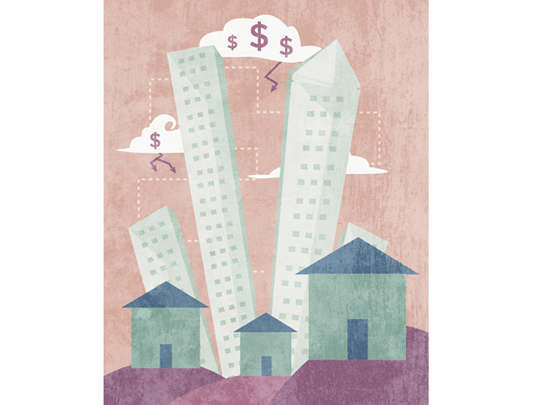
In his seminal work, ‘The Theory of The Leisure Class’, Thorstein Veblen coined the phrase “conspicuous consumption”. stating ‘In order to gain and hold the esteem of men, it is not sufficient merely to possess wealth or power. The wealth or power must be put in evidence, for esteem is awarded purely on evidence’.
It is from his work that economists were able to understand the demand for luxury assets, including trophy properties, that have, historically proved to exhibit a greater resilience to downward market cycles. And for the most part, outperform other property subsets in rising markets.
Dubai has been no different, with trophy properties rising by a staggering 158 per cent since 2007, far outperforming the upper-mid and mid-income segments of the market (by 47 per cent and 16 per cent respectively). Areas such as the Palm Jumeirah have stood out even by these lofty standards, with a price appreciation of 225 per cent, clearly indicating the superior demand of this address among global investors.
Array of projects
This is even as experts continue to voice concern over the growing shortage of mid-income properties, leading to inflationary pressures as rents surge within this segment. Expressions that villas are the safest investment have entered the mainstream lexicon, and developers, paying heed to historical price trends, have responded by offering an increasing array of spectacular projects as Dubai gears up for its next building boom.
However, it is interesting that the pipeline of supply is showing an increasing tilt towards the trophy property and the villa segment (the latter accounting for a third of future premium projects, compared to 13 per cent historically). When compared to projected population growth, these reveal an overhang of supply for the next two to three years.
Interestingly enough, price action in the last six to eight months reveal perhaps the beginning of a shift in investor behaviour, with the mid-income segment outperforming the trophy segment by nearly 50 per cent (18 per cent rise for the former as compared to 12 per cent for the latter). This trend of relative outperformance is expected to continue, especially when population forecasts released by the Dubai Statistics Centre are taken into account.
Forty-three per cent of the expected growth in population between now and 2020 is expected to be in the mid-income segment, and it is in this category that the supply shortfall is the greatest (by 3,425 units in the next 18 months). It is no surprise therefore to note that rents in this segment are surging by the highest level since 2007.
A transaction and correlation analysis of time series data reveals that transactions are a leading indicator of price trends. In the last six months, transactions at the upper end of the market have declined by as much as 50 per cent; similar declines have been witnessed in the villa segment. The mid-income segment has continued at a steady pace, and correlation trends indicate that for the mid-income segment such as the Greens and International city, price declines are expected to be negligible, whereas for the villa segment and the trophy market sector, declines of as much as 15 per cent is expected (again this has already been witnessed in certain sub-segments, with listed prices already down by 10 per cent in the last three months).
Perhaps the greatest indicator of the coming sluggishness in the higher end of the market (already underway as per the time series data) is when a valuation analysis is done using James Tobin’s Q ratio (an indicator of the relative overvaluation of an asset when compared to its book or replacement value, for which he won the Nobel Prize for economics in 1981). This reveals a ratio of over 2.1 for the trophy segment compared to 1.6 for the mid-income segment, revealing not only an absolute overvaluation, but also a relative overvaluation as well.
It is pertinent to note that the data streams only show a correction and sluggishness at the high-end, and not a repeat of any systemic decline as occurred in 2008. This is healthy for the markets, for only this sluggishness in price trends will cause a recalibration of the supply pipeline and allow developers to cater to the mid-income segment, for which there is pent up demand.
Especially when the few developers who are catering to this segment continue to report strong sales, even as transaction volumes have declined.
Trophy properties will always retain their cache, but in the upcoming price cycle, it is relevant to note that they are expected to underperform. Investors and developers alike will do well to take heed.
— The writer is the managing director of Global Capital Partners.












